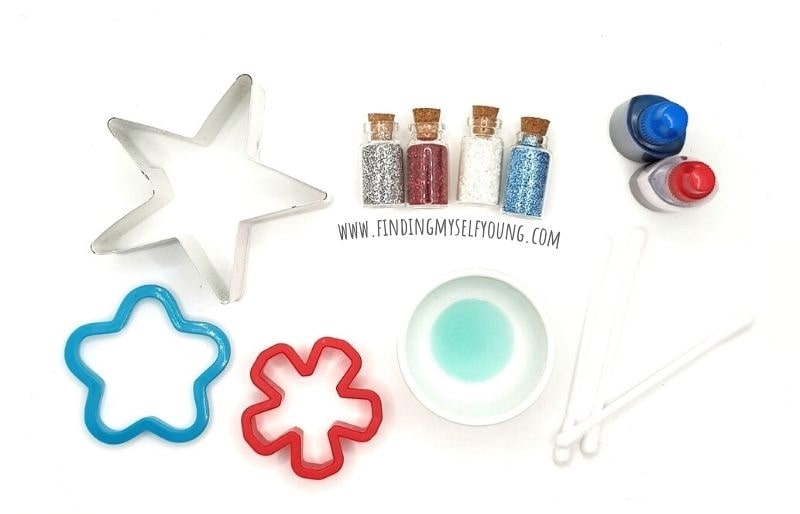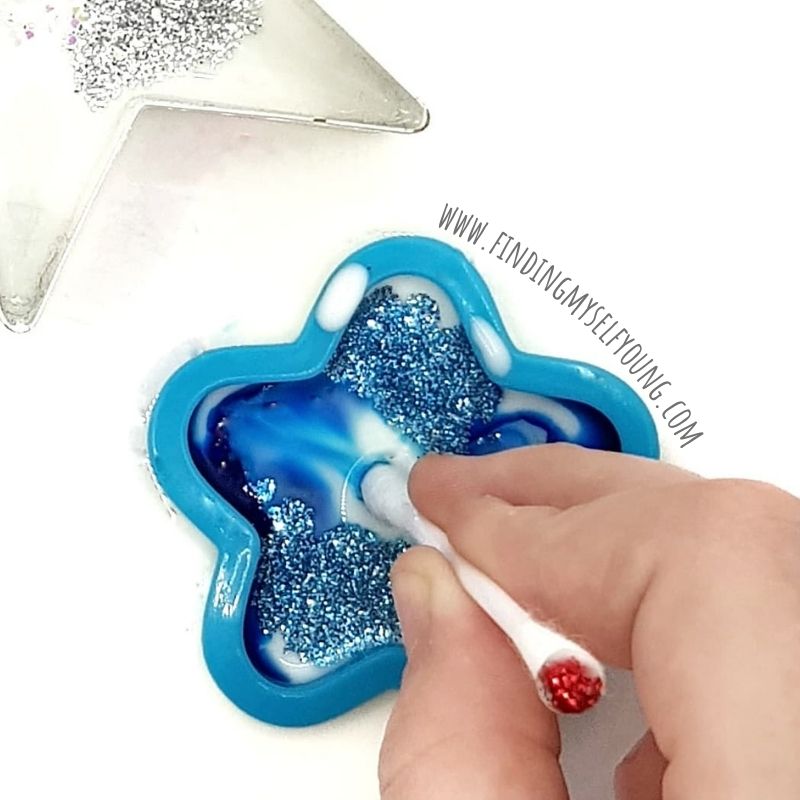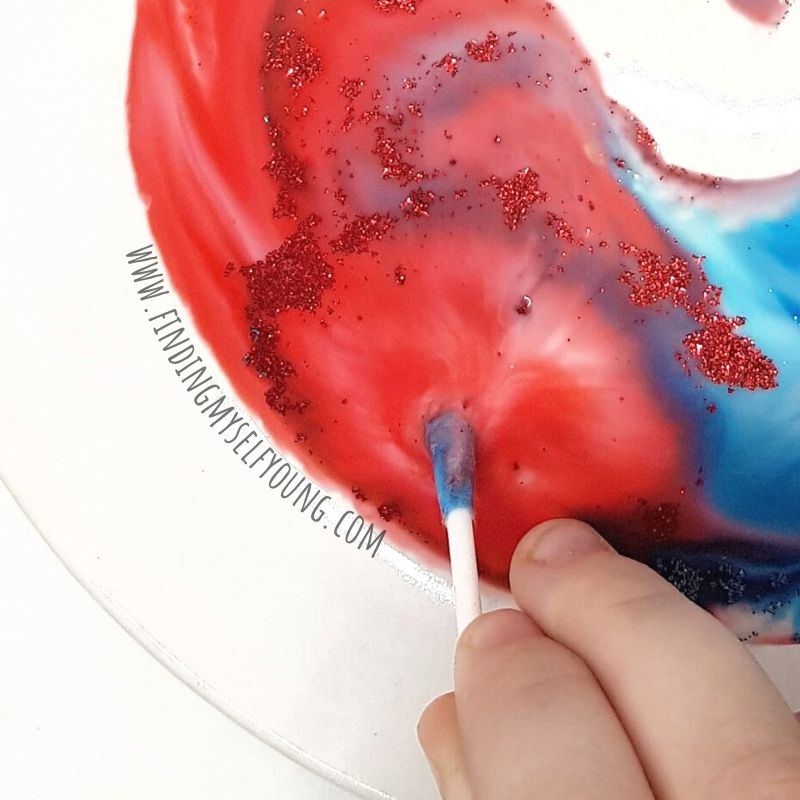One of our favourite science experiments is magic milk because it's so easy to set up, only requires basic pantry supplies and it has a real wow factor. We decided to do the magic milk experiment with a patriotic twist by using red, white and blue and adding some stars and sparkle. It's a simple, but fun 4th of July science experiment for kids of all ages.
PATRIOTIC MAGIC MILK EXPERIMENT
As I said before magic milk is a really easy science experiment for kids and you probably already have all the supplies you need at home in the kitchen. It's a low prep, safe and really engaging way to introduce children to chemistry. The experiment can also be done in small groups in the classroom with children as young as toddlers through to primary school kids.
To take the basic magic milk experiment and give it an American spin for the 4th of July, you'll need to stick to red and blue food colouring. You can also add in some red, blue, silver or clear glitter to represent fireworks bursting.
4th July Magic Milk Supplies:
- Q-tips
- Full fat milk
- Shallow plate
- Star cookie cutters
- Dishwashing liquid
- Red and blue food colouring
- Glitter {optional}
For our magic milk experiment I used a star cookie cutter and some star playdough cutters {which incidentally happened to be red, white and blue}. I think the red one might technically be a flower, but it's close enough to a star.
We added glitter to our magic milk to create some sparkle and the illusion of fireworks when the chemical reaction took place, however this is completely optional. If you're worried about the environmental impact of glitter you can get biodegradable glitter, or simply leave it out of the experiment.
HOW TO MAKE PATRIOTIC MAGIC MILK
Depending on the age of the children you're doing the experiment with, steps 1-3 may need to be completed by an adult. My girls were able to do the rest of the experiment themselves.
1. Place 3 star cutters onto a shallow plate and fill them with milk. You only need a small amount of milk, enough to cover the base of each star. Don't worry if some leaks out of the edges.
2. Add a few drops of red food colouring to one star and blue colouring to another. Keep the third star plain white with just milk.
3. Sprinkle some glitter into each star {optional}. Red glitter into the star with red food colouring, blue glitter into the blue food colouring and silver or iridescent glitter into the plain white star.
4. Dip the end of a q-tip {cotton bud} into dishwashing liquid. You can use multiple cotton buds if you want a separate one for each star.
5. Dip a q-tip into the food colouring inside each star and watch what happens. The food colouring and glitter will repel away from the q-tip to create magic fireworks. The bigger star cutters you use, the more impressive the firework effect will be as the colour can travel further away from the q-tip.
6. Remove the star cutters and continue dipping the dishwashing liquid q-tips into the milk to see how the colours dance and swirl across the plate.
The colours will start to bleed into each other and, if the kids keep exploring it long enough, the milk will eventually start turning purple.
Both of my girls loved doing this experiment watching how the colours and glitter moved across the milk. It also became a fun colour lesson about how primary colours can make secondary colours as the blue and red started combining to create purple.
MAGIC MILK EXPERIMENT EXPLAINED
The reason the colour darts across the milk in such a quick and magical way during the magic milk experiment, is because there's a chemical reaction taking place as the q-tip comes in contact with the milk.
Soap molecules in dishwashing liquid are super attracted to fat molecules and will try to attach themselves to them as fast as possible, which is why it's so useful for cleaning any residue off dishes. When the dishwashing liquid touches the milk it breaks the surface tension of the liquid and weakens the bonds between the water, fats and proteins of the milk. The soap molecules then quickly attach to the fat molecules in the milk, which causes movement as they contort and expel the water away.
This chemical reaction is normally not visible to the naked eye, however the addition of food colouring allows us to visually see the movement of the molecules occurring within the milk. The addition of glitter also helps with this as it too will be repelled away by the force of the molecules connecting. Eventually once all the fat molecules have connected with a soap molecule the reaction will no longer occur.
Disclaimer - This post contains some affiliate links for your convenience, which means I may make a small commission at no cost to you, should you make a purchase.




.jpg)




-min.jpg)





